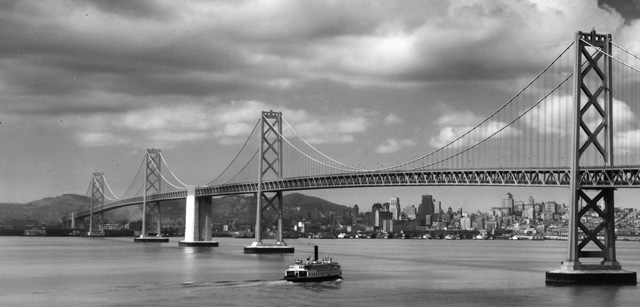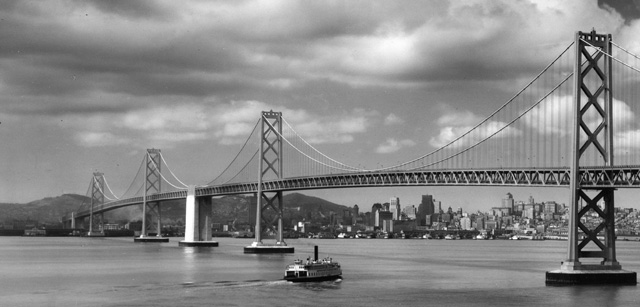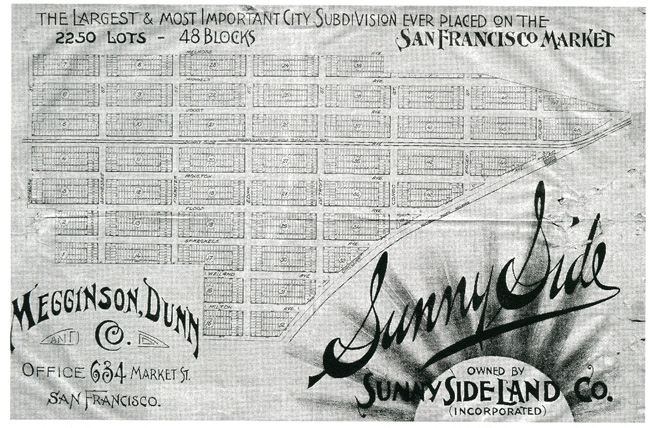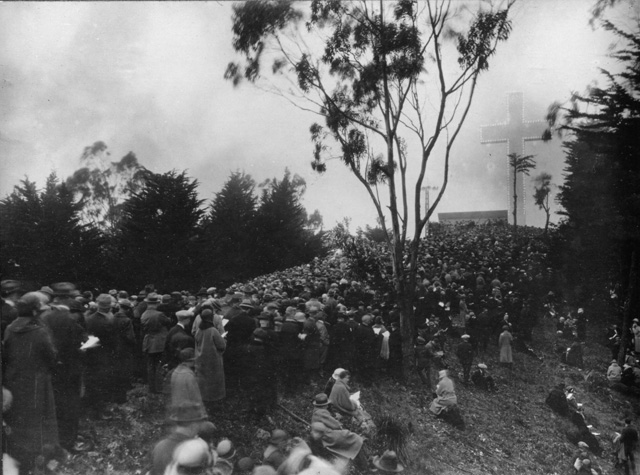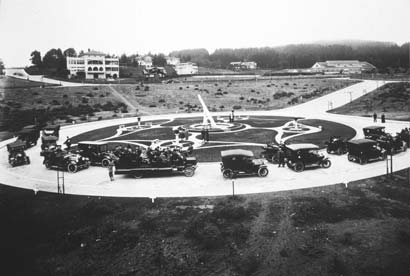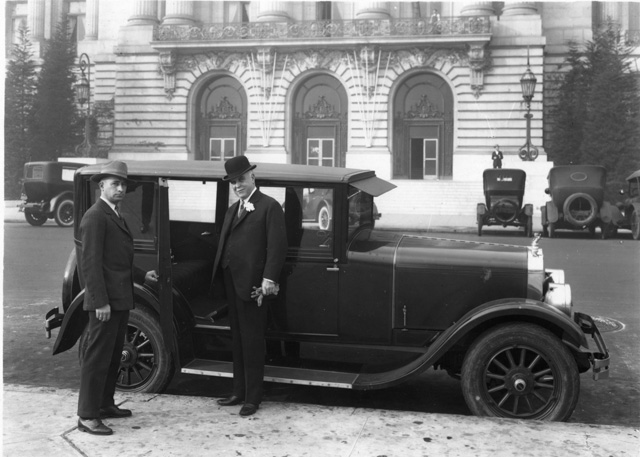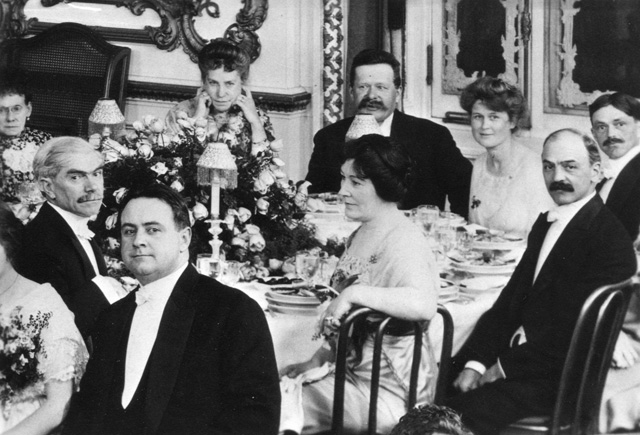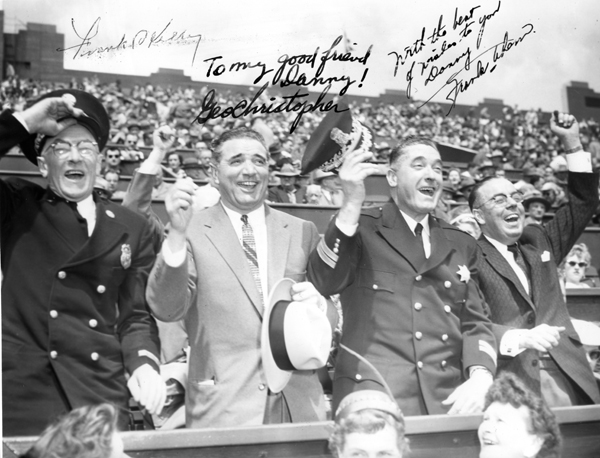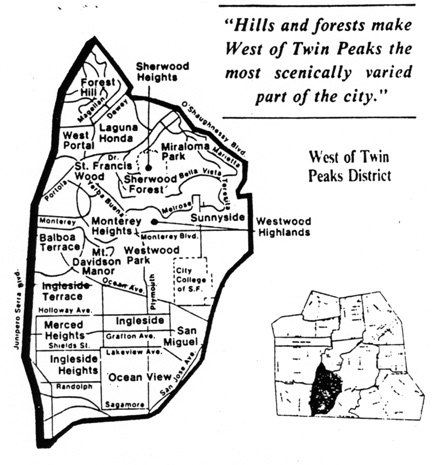Mount Davidson and its Historic Neighborhoods
Mount Davidson and its Historic Neighborhoods
Mt. Davidson is not only the highest geographic point (938ft.) on the world famous San Francisco skyline (the forested peak to the left of the Bay Bridge above, and covered with snow below) and home to the Mount Davidson Cross and the Annual Easter Sunrise Service 2025, but offers an insiders view of the development of the city, California, and the westward expansion of the United States from its heart West of Twin Peaks.
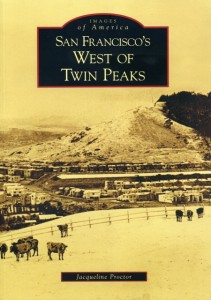
Named to honor George Davidson, noted scientist and incorruptible Chief of the U.S. Coast and Geodetic Survey’s Pacific Operations, Mount Davidson Park provides a peaceful 40-acre oasis of public open space in the middle of the densest city in California. At its top is a time capsule with a transcript of the title signed by the first Mexican Governor of California, Pio Pico, granting ownership of the mountain to Don Jose de Jesus Noe, the last Mexican Alcalde (mayor) of Yerba Buena. Noe was only the first of many of San Francisco’s mayors who have been drawn to its highest point. The fourth, Cornelius Garrison, bought Noe’s rancho from John Horner in 1855. Adolph Sutro, the 21st Mayor, purchased 1200 acres in 1881 from the estate of Francois Pioche.
The California Supreme Court overturned Sutro’s will of his land to charity and granted the appraiser of his estate, A.S. Baldwin, the right to develop the area around Mount Davidson into new residential neighborhoods. He and his fellow developers used a variety of warm and sunny advertising methods to get people to come from downtown San Francisco out to the foggy outside lands west of Twin Peaks. Behrend Joost called his new development Sunnyside. A.S. Baldwin built trails up to the top of the renamed Mount Davidson which inspired YMCA Director George Decatur to organize a sunrise Easter event there in 1923. Urban Realty Company built the world’s largest sundial to get publicity for their development of Ingleside Terraces. Miraloma Park had a home called Sunshine Gables.
To further entice people to the outside lands, these new City Beautiful Movement “residence parks”, including Balboa Terrace, Ingleside Terraces, Westwood Park, Mount Davidson Manor, Westwood Highlands, Monterey Heights, and Forest Hill had homes designed by leading architects, including Timothy and Milton Pflueger, Ida McCain, Harold G. Stoner and Julia Morgan, along landscaped and view enhancing curvilinear boulevards.
Margaret Mary Morgan, the first woman elected to the Board of Supervisors, State Park Commissioner, Madie Brown, and other women attending the sunrise services on Mount Davidson in 1926 were inspired to use their new 19th amendment political strength to organize one of the first grass roots environmental efforts to save the remaining open space from development. With Mr. Baldwin’s wife donating the six-acre summit of the City’s highest hill, they raised funds during the Great Depression to build the world’s largest cross. Designed by the creators of San Francisco’s tallest buildings, George Kelham and Henry J. Brunnier, four-term mayor and CA governor, Sunny Jim Rolph (below left}, laid the first cornerstone for the 103-foot Mount Davidson Cross with Mayor Rossi (center) looking on in 1934. Madie Brown “dared to dream” that President Roosevelt would accept her invitation to light the monument for “bringing light into many a darkened home,” and “instilling the principles of the Golden Rule into American business.” Mayors would continue to attend the annual event and many would make their home in the West of Twin Peaks District. George Christopher (below right), elected Mayor of San Francisco in 1956, had a dairy business below O’Shaughnessy Boulevard. Mayor John F. Shelley would plan to build his mansion in Sherwood Forest, Mayor George Moscone lived in the same neighborhood, Mayor Art Agnos down the hill in West Portal, and Mayor Willie Brown in Miraloma Park.
But it would take the help of the Mayor Rolph to get the financing to build the public transportation and roads to these new “suburbs in the city” before the children of the Gold Rush and others looking to fulfill the American Dream of owning their own homes came here to raise their families. After World War II, Tower Market (below) became the landmark gateway to the now family-filled West of Twin Peaks District. Many San Francisco notables made their home here including Dr. Carlton Goodlett, Publisher of the Sun Reporter, Calvin Simmons, Conductor of the Oakland Symphony, Police Chief Al Nelder, Evelyn Cisneros and Stephen Legate of the San Francisco Ballet, Jazz Saxophonist Joe Henderson, 49er Abe Woodson, City Attorney Louise Renne, Carol Channing, San Francisco Giant Willie Mays, Opera Singer Helen Dilworth, Architect Milton Pflueger, Engineer Henry Brunnier, Art Linkletter, Governor Edmund G. “Pat” Brown, his son, Governor and Mayor of Oakland, Jerry Brown, and many others whose businesses and civic activities made San Francisco a world class city including the Pommon, Hoegger, Puente, Brown, Davis, Jones, Larribeau, Bisho, Deliso, Pinto, Gullmes, Mettling, Kaplan families and more. Feeling the pulse of the city during times of crisis with crowds up to 75,000 seeking comfort and hope during World War II, the city’s highest hill and its monument inspired a second trip to the California Supreme Court a century after Adolph Sutro’s death in 1898 to settle a dispute about what can be built there. Neighbors of the historic park and monument organized the Friends of Mount Davidson Conservancy to protect it for the future.
San Franciscans are known throughout the world for their dreams and efforts to make them come true. The diverse and family friendly neighborhoods West of Twin Peaks continue this history of supporting the arts and sciences, environmental protection, educational and economic opportunities, and social justice … living and making San Francisco what it is today.
Next: Chapter 1 Birth of a Benevolent City – The California Dream
Bibliography
Conditions of Use

